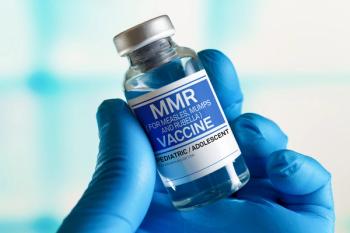
How to Create an Engaging Specialty Pharmacy Clinical Program
Effective clinical programs in specialty pharmacy encourage adherence and lead to superior treatment outcomes.
The goal of a disease management program is to improve or maintain a patient’s health condition, reduce hospitalizations, and lower costs. Many programs have been created and implemented, producing only minimal-to-moderate results, and rarely delivering success across all 3 goals.
A well-designed clinical program focuses on a specific group of patients diagnosed with the same disease state. The standardization of the target group allows for greater specificity in program design; however, the group must be large enough to be statistically significant to allow for information mining from a deep data pool.
A large program has the advantage of economies of scale and a varied mix of the population diagnosed with the illness.1 A simple clinical program with clearly-defined goals, basic enrollment criteria, and consistent patient interventions results in a streamlined program that creates easy follow-through at each visit or interaction.
When possible, the same provider should be assigned, and responsible for, the program touch points, which drive consistency at each interaction, and within subsequent documentation. Keeping it simple for patients is essential. If the program is overly complicated, or demands too many touch points, there is risk to having poor compliance and/or a high dropout rate.
A clinical program that blends utilization management into a disease management program is ideal. A cornerstone of a successful clinical program is to keep it simple, consider the complexities a blended program requires, and determine the best case and worse case scenarios before starting development.
Complex programs can be difficult to execute, and once the funding is spent, it will be too costly to fix. A complex program can be successful, as long as goals are established, and there is flexibility built in for changes when an evaluation of the data is below expectations, or the participant’s feedback raises concerns about the program design.
Specialty pharmacy is a competitive business, and every organization wants to offer a program or option that provides an advantage over a competitor. Clinical programs, whether focusing on disease management, utilization management, or formulary management, are one means of differentiation.
The programs a specialty pharmacy offers must be relevant, and positively impact patient outcomes. In some cases, program offerings may win the firm business and, over time, the program can become a revenue source, as clients or pharma would be willing to pay for de-identified results.
Ultimately, a program must be viewed by the patient as worthwhile to them. In most cases, the patient is opting-in, or has the right to drop from the program at any time. Without the patient’s participation, the program has no value.
A clinical program can be an enjoyable experience for the patient, but it needs to deliver some form of incentive for the patient. For some, the incentive to sign on is the opportunity to get better through the offer of additional support at no cost to them.
For others, it may be a financial reward or prize, after so many completed cycles or interventions. Knowing and understanding the audience is essential to the program development.
As an example, a health plan seeks the partnership of a specialty pharmacy to develop a program for children with a disease state requiring frequent injections. The injections are done at home and, over a period of time, could be self-administered, but the first step is to keep on schedule with the injection cadence. The goal is to maximize adherence, and eventually advance to self-injection training.
A program for children should be simple to understand, have a tangible reward for each injection, and could culminate in a larger offering after a period of time (maybe semi-annually) when the data reports 6 consecutive on-time refill orders were dispensed to the patient. A well-designed program for children could help the caregiver administer the injection, because there is something to look forward to after the event, and even greater rewards the longer the therapy lasts.2
A clinical program of this nature encourages adherence; impacts MPR, which means the patient is more likely to use the medication because it is available; and has a positive impact on clinical outcomes.
Clinical programs should not be viewed as fun and games, but require putting effort into the design, and remaining cognizant of the need for some incentives, regardless of the age of the patient. Incentives are expected from all parties for their role in the program.
The prescribers expect some form of compensation for the data reported on each interaction. The health plan is expecting a cost savings for supporting the program.
Pharma’s incentive is to start and maintain as many patients on their product for the duration of therapy, and a clinical program offers this support while encouraging medication compliance. Finally, the pharmacy’s incentive is to garner new opportunities for collaboration with pharma, health plans, prescribers, and patients all seeking a partner to obtain lasting outcomes.
About the Author
Jill Schachte earned her BS in Pharmacy from Duquesne University and is currently enrolled in the Masters of Science in Pharmacy Business Administration (MSPBA) program at the University of Pittsburgh, a 12-month, executive-style graduate education program designed for working professionals striving to be tomorrow’s leaders in the business of medicines. Jill has spent the past 20 years working in specialty pharmacy, starting as a clinical pharmacist with Stadtlanders Pharmacy and working in a variety of a management roles in specialty pharmacy operations for CVS Health. Jill’s current role is on the CVS Specialty Professional Practice team with a focus on accreditation and compliance for all the specialty pharmacy locations within CVS Health.
References
- http://www.mckinsey.com/industries/healthcare-systems-and-services/our-insights/how-to-design-a-successful-disease-management-program
- http://kidshealth.org/en/parents/injections-tests.html
Newsletter
Stay informed on drug updates, treatment guidelines, and pharmacy practice trends—subscribe to Pharmacy Times for weekly clinical insights.














































































































































































































